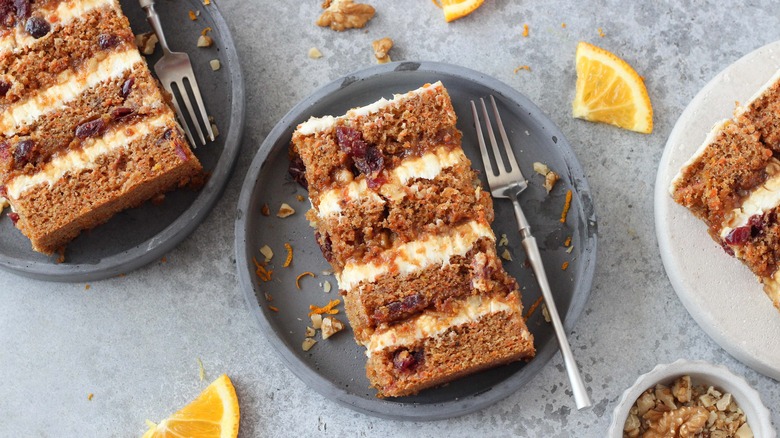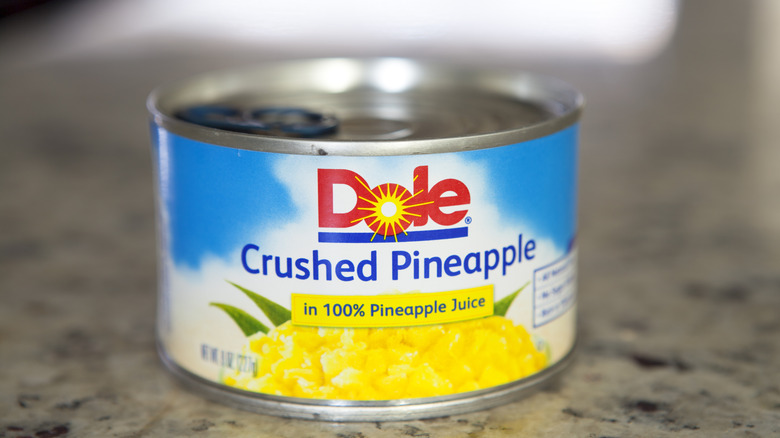Canned Crushed Pineapple Is Key To A Moist Carrot Cake
If you've ever had a dry carrot cake, you know just how awful it can be. In a carrot cake, you get all the wonderful tastes of the carrot, as well as the aromatic spices, such as cinnamon, nutmeg, ginger, and cloves, but if the cake is a sandy, dry amalgamation of all those flavors, then not even the delectable cream cheese frosting can fix it; texture can make or break a cake. So, how do you prevent a dry carrot cake? For the quickest and most effective way, use crushed, canned pineapples.
Why pineapple? Taste-wise, pineapple has a strong flavor that doesn't work in other cakes but blends well with the other strong flavors in carrot cake. The fruit also adds a tinge of sweetness to the spicy cake. But pineapple works best because of its water content; pineapples are naturally about 86% water. Additionally, pineapples maintain much of this water content (sitting around 83% water) when canned.
Canned pineapple is also the best option to add to carrot cake because it lacks the enzyme bromelain. Fresh pineapples contain this protein-killing enzyme, but the enzyme is destroyed in the canning process due to high heat. This means potential gluten issues are avoided in the baking process. Using any canned pineapples is theoretically fine, though crushed is the recommended way to avoid making your carrot cake a pineapple cake.
How to use pineapple and other carrot cake additions
When making a carrot cake with canned, crushed pineapples, remember that it isn't a substitution; it's an addition. Most recipes call for one 8-ounce can of pineapples, or 1 cup, added in the final step (with the carrots) before baking. You should also drain the pineapples to avoid an overly wet, mushy carrot cake.
While pineapple is a tried and true method of perking up a carrot cake, it's certainly not the only additive that can make the cake better. One common added ingredient is nuts, usually walnuts or pecans, which can be mixed in the batter (if finely chopped), thrown on top for decoration, or both. Some recipes even suggest toasting the nuts for a deeper flavor, but either way, you'll get an earthy flavor and crunchy texture.
Another addition is bourbon. When choosing a bourbon to use in your carrot cake, look on the bottle for that particular alcohol's tasting notes. Look for flavors such as vanilla, ginger, nutmeg, cinnamon, or sweet/nutty; these flavors will pair best with the spicy, brown sugary carrot cake.
Finally, consider a substitution for a healthier version of carrot cake by replacing oil with applesauce. There are a couple of things to consider with this swap: First, this is not a 1:1 substitution. Because of the high water content in applesauce, you'll want to use less than you would oil (no more than half the original amount). Second, be sure to check your applesauce label — If it says "sweetened," consider adding a little less sugar to compensate.

